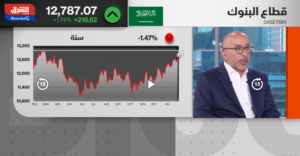In Dubai, real estate, oversupply stopped being an issue
Analysts should dissect these trends rather than keep talking about past ones
This is ironic because commentators have played a vital role in the discourse, the outcome of conversations, and affected the confidence of investors at large. However, with the end of the ‘one-page’ equation doctrine, it is necessary to examine how these narratives have built up, and how to avoid their obvious pitfalls.
The formula for building a narrative has three essential components regardless of whether prices are rising or falling in order to have explanatory value. One: To say whatever that needs to be said to explain the trend. In an era where prices were sluggish, supply became the easiest variable to attack. Thanks to social media, the cost of framing these messages has dramatically fallen.
An easy narrative
Not only is it low cost, but it is also low risk to committing factual errors. Given that the market was awash with supply, presumably developers (who stand most to lose or gain by building) did not have access to these analytical tools.
Two: once the narrative has been built, it is easy to blame everyone else, from errant developers to insufficient regulation or a combination of both. It is always ‘the other’ that is held responsible, conveniently ignoring that the reason for the moderation in demand had to do with prices rising significantly above replacement value. This is the same narrative that was pushed for tech stocks in the US, which now is in the process of deflating.
Three: the piece de resistance is to nurture, cultivate and mine the loyal supporter, whether it is through sympathy (prices are lower because of suppliers not paying heed) or through analysis, by erroneously reporting the number of units being delivered every year.
Analysis is a nuanced skill that, alongside rationality, needs to be developed over time. Sell-side analysts will mostly congregate towards one message in unison: this message then attacks the ethos of the ‘money mind’ investor.
Convenient omission of ‘oversupply’
Those who repeatedly pointed out that supply statistics were a) wrong and b) itself needed further scrutiny because of the variability in quality and delivery were conveniently ignored. When the price cycle changed course, these analysts dropped the emphasis on supply and deployed the fresh narrative of ‘safe haven’ status. While the latter is undoubtedly a fact, it again ignores the facts on the ground: value in real estate gets quantified through a series of systematic variables that start with replacement value (its equivalent being book value when analyzing equities).
Astonishingly, there is hardly any mention of supply in the current analyses, and in some cases, even a paucity of homes available. The pendulum of the narrative has swung from one extreme to the other, indicating an amorphous sense of history. This is not new, but the ‘money mind’ has to put it all together to realize what is missing from the analysis before making an investment decision. The phrase money mind, coined by Warren Buffett is an easy to remember prescription that describes, at one level, a way of thinking about complex issues such as capital allocation, but critically, about a commitment to learning and facing down irrelevant noise.
It is clear that in the current environment, there is bound to be some moderation and, in some cases, even a correction in prices at the top end of the market. The yardstick for such a prognosis has been exactly what was the case in the past: an examination of ‘replacement values’. Where prices have gone significantly above replacement value, theory (and common sense) dictates a gravitational pull downwards.
This is reinforced by rising interest rates and inflation, a strengthening of the dollar, tightening liquidity and other geopolitical variables, all of which will temper demand. Supply, which by its very nature is inelastic, will adjust in time, and liquidity will gravitate towards areas that have been largely overlooked in the current rally. To argue otherwise is to argue for a pastiche of a happy ending, and analysts as well as middlemen who seek to foster long-term relationships will be well advised to pay heed.





